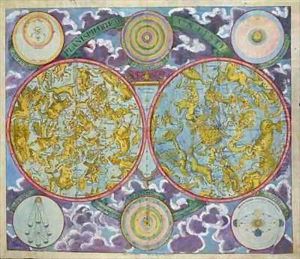Georg Christoph II Eimmart Paintings
Georg Christoph Eimmart II, born on August 22, 1638, in Ratisbon (Regensburg), Germany, was a notable figure in the realms of art and science during the late 17th and early 18th centuries. He was a multi-talented individual, excelling as an engraver, draughtsman, painter, and astronomer. His contributions, especially in the field of astronomy, have left a lasting impact, bridging the gap between art and science in an era that was on the cusp of the Enlightenment. Eimmart comes from a lineage of artists; his father, Georg Christoph Eimmart I, was also an accomplished painter and engraver, from whom he inherited his initial training and passion for the arts.
Eimmart's journey into the world of astronomy began in his early years, fueled by his curiosity and the intellectual milieu of the time. He pursued his interests with vigor, establishing an observatory in Nuremberg, which quickly became a center for astronomical research and observation. His meticulous observations, particularly of the moon, contributed significantly to the lunar cartography of his time. Eimmart's moon maps were among the most accurate before the advent of telescopic photography, showcasing his precision and skill in both observation and artistic representation.
Aside from his astronomical pursuits, Eimmart II made substantial contributions to the art world, particularly through his engravings and drawings. His works were renowned for their detail, accuracy, and aesthetic appeal, often blending scientific precision with artistic elegance. This dual expertise in art and science enabled him to illustrate celestial phenomena with unparalleled clarity and beauty, making complex scientific concepts accessible and engaging to a broader audience.
Georg Christoph Eimmart II passed away on January 5, 1705, in Nuremberg. His legacy is preserved through his contributions to both the scientific and artistic communities. His work exemplifies the fruitful collaboration between art and science, highlighting the importance of visual representation in the understanding and dissemination of scientific knowledge. Eimmart's life and work remain a testament to the rich interplay between these two disciplines during the Baroque period, underscoring the enduring impact of his interdisciplinary approach.
